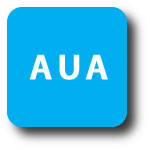ORLANDO, FL USA (UroToday.com) - Histotripsy is a non-thermal pulsed high-intensity focused ultrasound technology that homogenizes a target tissue. George R. Schade and colleagues developed a new technique termed boiling histotripsy. Because it is a non-invasive approach, it offers several advantages over conventional techniques. The researchers’ aim was to evaluate their technique in fresh porcine and human kidney to demonstrate feasibility of the technique.
 The researchers used 20 porcine kidneys and 6 fresh human renal tissues. Tissue was degassed for greater than 30 minutes in buffered saline and then treated with boiling histotripsy. Treated tissue was then evaluated both grossly and using histology.
The researchers used 20 porcine kidneys and 6 fresh human renal tissues. Tissue was degassed for greater than 30 minutes in buffered saline and then treated with boiling histotripsy. Treated tissue was then evaluated both grossly and using histology.
The authors found that the medulla was more resistant to their boiling histotripsy technique than cortical tissue. Histologically, lesions were found to be comet shaped. The collecting system was still more resistant, where the authors found that more than 120 pulses were required.
The authors concluded that boiling histotripsy is feasible. The finding that collecting systems are resistant to this technique can produce numerous benefits in terms of correct management of renal masses. Their similarity of findings in both human and porcine models is important in that it paves the way for more studies to be performed on this topic. It would be beneficial to also study the mechanisms that are responsible for the results the authors observed.
Presented by George R. Schade, MD at the American Urological Association (AUA) Annual Meeting - May 16 - 21, 2014 - Orlando, Florida USA
University of Washington, Seattle, WA USA
Written by Garen Abedi, MD, University of California (Irvine), and medical writer for UroToday.com



